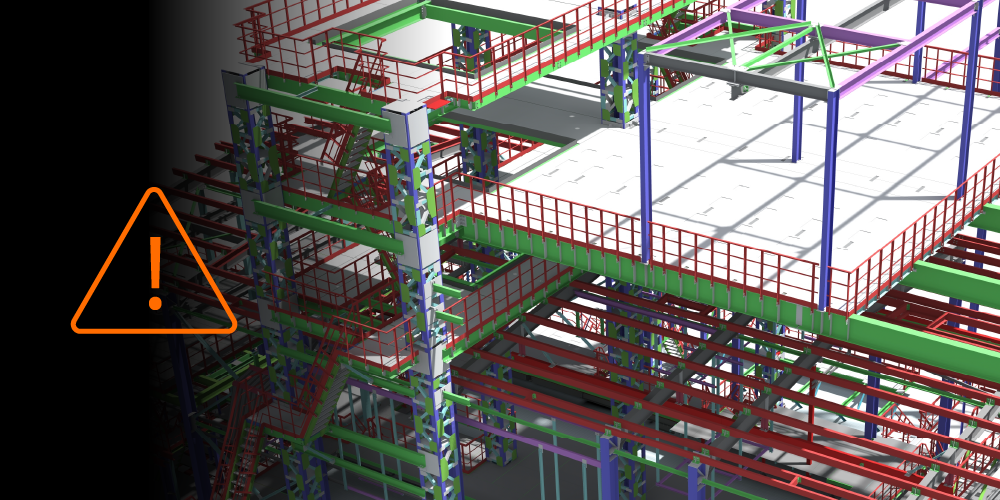Related Articles
— 6 min read
Mastering Subcontractor Management: Tips for Smoother, More Profitable Projects

Last Updated Aug 28, 2025

Josh Krissansen
47 articles
Josh Krissansen is a freelance writer with two years of experience contributing to Procore's educational library. He specialises in transforming complex construction concepts into clear, actionable insights for professionals in the industry.
Last Updated Aug 28, 2025

Subcontractor management directly impacts project quality, timelines, and profitability. Strategic oversight reduces risk and keeps work running on schedule while maintaining budget control.
This article explores the essential components of subcontractor management and proven strategies for Australian construction teams to optimise project delivery.
Table of contents
What is Subcontractor Management?
Subcontractor management encompasses the planning, coordination, and oversight of subcontracted work throughout a construction project. This process includes defining work scope, selecting qualified contractors, monitoring performance, ensuring compliance, and managing payments.
Unlike direct employees, subcontractors operate as independent businesses with specialised expertise. For general contractors and project teams, structured contracts, clear communication, and systematic processes maintain productive relationships and keep projects on track.
In Australia, subcontractor management requires compliance with Work Health and Safety (WHS) obligations, background verification, and adherence to the Security of Payment Act. These requirements protect project timelines and confirm work meets required standards.
Key Components of Subcontractor Management
Successful subcontractor management requires systematic processes that address every stage of the contractor relationship. These interconnected components work together to minimise project risk while maximising subcontractor performance and project outcomes.
Defining Project Scope and Requirements
Clear project definition prevents misunderstandings and scope creep before subcontractors begin work. Poorly defined scopes represent a significant source of construction disputes in Australia, making upfront clarity a critical investment in project success.
Well-defined scopes should include:
- Specific deliverables and quality standards
- Timeline requirements and critical milestones
- Site access and safety protocols
- Documentation and reporting obligations
- Interface requirements with other trades
This foundation reduces change orders and supports more accurate project forecasting, which is particularly important in Australia's competitive construction market where margins are increasingly tight.
Subcontractor Selection and Prequalification
Prequalification evaluates potential subcontractors for technical capability, safety performance, licensing, and financial stability. The selection process directly impacts project quality, with thorough prequalification reducing project disruptions and cost overruns. Prequalification processes are particularly critical given the challenging economic conditions facing many construction companies.
Australian prequalification typically includes:
- Right-to-work verification and licensing checks
- Insurance validation and coverage limits
- Safety track record and incident history
- Financial health and bonding capacity
- Past performance reviews and client references
- Trade-specific certifications and accreditations
Disqualifying factors include expired credentials, poor safety records, or failure to meet industry-specific certifications required for the project. This systematic evaluation protects against subcontractor failures that can derail entire project schedules and expose principals to significant liability under Australian construction law.
Contract Development and Documentation
Well-structured agreements serve as the legal foundation for successful project delivery, with comprehensive contracts significantly reducing payment disputes according to industry research.
Essential contract elements include:
- Detailed scope of work and specifications
- Payment terms aligned with Security of Payment Act requirements
- Timeline milestones and completion deadlines
- Safety requirements and site-specific protocols
- Variation procedures and change management
These agreements provide all parties access to current information and support faster resolution when issues arise. They also protect both contractors and clients from liability exposure throughout the project lifecycle.
Performance Monitoring and Quality Assurance
Ongoing oversight confirms subcontractors deliver work safely, on time, and to specification. Active monitoring allows project managers to identify performance issues early, when corrective action is still cost-effective rather than waiting until problems become critical.
Comprehensive monitoring includes:
- Regular site inspections and progress reviews
- Quality checkpoints at critical project phases
- Performance scorecards tracking key metrics
- Work completion records and progress tracking
- Proactive identification of potential issues
- Integration with project scheduling software
Consistent monitoring prevents small problems from escalating into project stops or quality failures. This also provides the documentation needed for performance evaluations and future contractor selection decisions, creating a valuable database for long-term relationship management.
Communication and Coordination
Clear communication between builders, subcontractors, project managers, and consultants prevents costly misunderstandings. Poor coordination between trades often leads to rework and inefficiencies, making structured communication protocols essential for project success.
Strategic communication approaches:
- Weekly coordination meetings with all trades
- Collaboration platforms for real-time updates
- Mobile tools for instant site-wide announcements
- Structured reporting procedures for progress tracking
- Clear escalation paths for issue resolution
- Regular toolbox talks addressing coordination challenges
Strong communication creates collaborative site culture where problems are identified and resolved quickly. This proactive approach reduces the likelihood of disputes and keeps all stakeholders aligned on project objectives while building the trust necessary for long-term trade partnerships.
See what’s coming in construction over the next decade.
Download the Future State of Construction Report for insights, trends, and innovations shaping the industry over the next 8–10 years.

Risk Management and Compliance
Proactive risk management identifies and mitigates subcontractor-related project risks. Well-managed risk identification and mitigation can substantially reduce overall project costs through early identification of potential issues before they impact project delivery.
Key risk management areas:
- WHS compliance and safety protocol adherence
- Financial monitoring and payment security
- Schedule dependency management and critical path protection
- Specification compliance and quality assurance
- Insurance coverage verification and claims management
Real-time risk tracking tools help project teams monitor subcontractor-specific issues as they arise. This visibility allows teams to take corrective action before problems escalate.
Payment Processing and Record Management
Accurate work tracking and claims processing support timely, compliant payments while protecting against disputes. Streamlined payment processes reduce administrative overhead and improve subcontractor relationships, leading to better performance on current and future projects.
Best practices include:
- Progress tracking and milestone verification
- Automated payment workflows with approval controls
- Detailed records for audits and reviews
- Retention management aligned with contract terms
- Integration with project accounting systems
Centralised record keeping provides accessibility for contract reviews, certifications, and compliance reporting. This also supports more accurate project cost tracking and financial forecasting across multiple projects.
How Smart Subcontractor Management Drives Project Success
Well-managed subcontractor relationships deliver measurable improvements to project outcomes, from cost control to schedule adherence. These benefits highlight the value of strong subcontractor management in delivering successful projects.
Superior Quality and Consistency
Well-structured onboarding and defined expectations help subcontractors deliver work to specification from project start. Regular progress reviews and quality checkpoints maintain standards across all project phases, reducing rework requirements and supporting smoother project handover.
Improved Project Coordination
Documented subcontractor responsibilities and proper project sequencing avoid coordination issues. Early identification and resolution of conflicts keeps projects on schedule and prevents cascading delays across multiple trades.
Enhanced Safety and Compliance
Site-specific inductions, safety checklists, and compliance records support adherence to WHS regulations and on-site protocols. This reduces incident risk and protects workers, subcontractors, and site supervisors.
Efficient Payment Processing
Accurate work completion records support faster payment approvals. Well-maintained records assist during audits, inspections, and contract reviews, saving administrative time when issues arise.
Productive Subcontractor Relationships
Subcontractors who understand expectations and receive appropriate support communicate proactively and flag issues early. This collaboration fosters positive site culture where problems are addressed before escalating.
Leveraging Technology for Subcontractor Management
Digital solutions can transform how construction teams manage subcontractor relationships and processes. Construction management platforms centralise subcontractor processes, from onboarding through final payment, while providing the visibility and control needed for successful project delivery.
Key technology benefits:
- Centralised project documentation: Manage contracts, insurance, safety records, and performance data in one platform
- Real-time visibility: Track progress, log observations, and collaborate using mobile tools
- Automated workflows: Streamline payment processes with submission and approval tracking
- Compliance monitoring: Maintain current records for WHS requirements and regulatory reporting
- Performance analytics: Generate insights on subcontractor performance across multiple projects
Technology-enabled subcontractor management scales more efficiently, supports comprehensive auditing, and reduces administrative burden while improving project outcomes.
Strategic subcontractor management drives measurable project improvements.
Systematic subcontractor management combines structured processes, clear communication, and appropriate technology to reduce project delays, improve quality, and strengthen risk management. Australian construction teams implementing these strategies achieve better project outcomes while building valuable long-term trade partnerships.
Categories:
Written by

Josh Krissansen
47 articles
Josh Krissansen is a freelance writer with two years of experience contributing to Procore's educational library. He specialises in transforming complex construction concepts into clear, actionable insights for professionals in the industry.
View profileExplore more helpful resources

Managing Direct Costs in Construction: How Visibility Drives Profitability
Direct costs define the financial reality of every construction project. They cover the labour, materials, and equipment that drive delivery and determine profitability. But even the best-planned budgets can shift...

BIM Clash Detection: Reducing Rework, Delays, and Risk in Construction
Design clashes can be a significant hidden cost in construction, as each conflict between systems risks expensive rework, project delays, and reduced margins. BIM clash detection empowers teams to identify...

Next-Gen Job-Costing: Ready to Move? 5 Things to Consider Before You Get Started
In this three-part series, Quantity Surveyor turned Financial Solutions Specialist Clint Burgess uncovers the real-world gains for people, processes, and profits when businesses move from legacy to next-generation Enterprise Resource...

From Workarounds to Workflow: Solving Construction’s Legacy Job-Costing System Challenges with Next-Gen Tools
In this three-part series, Quantity Surveyor turned Financial Solutions Specialist Clint Burgess uncovers the real-world gains for people, processes, and profits when businesses move from legacy to next-generation Enterprise Resource...
